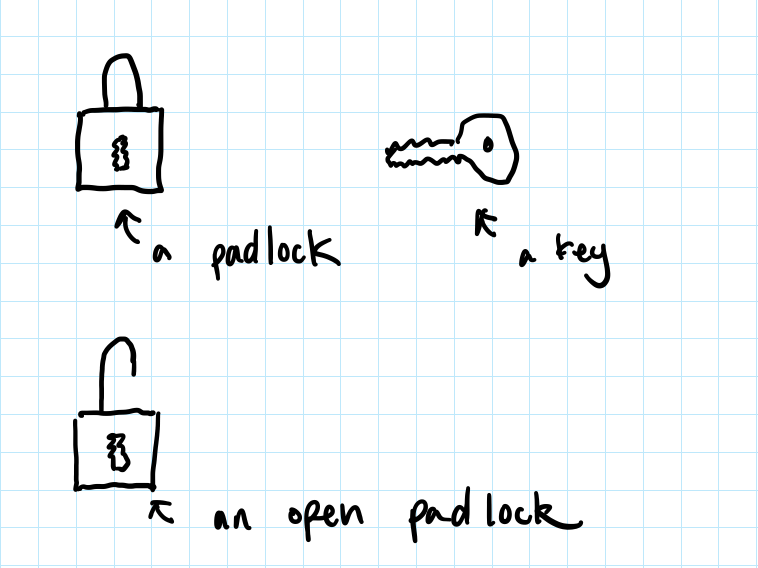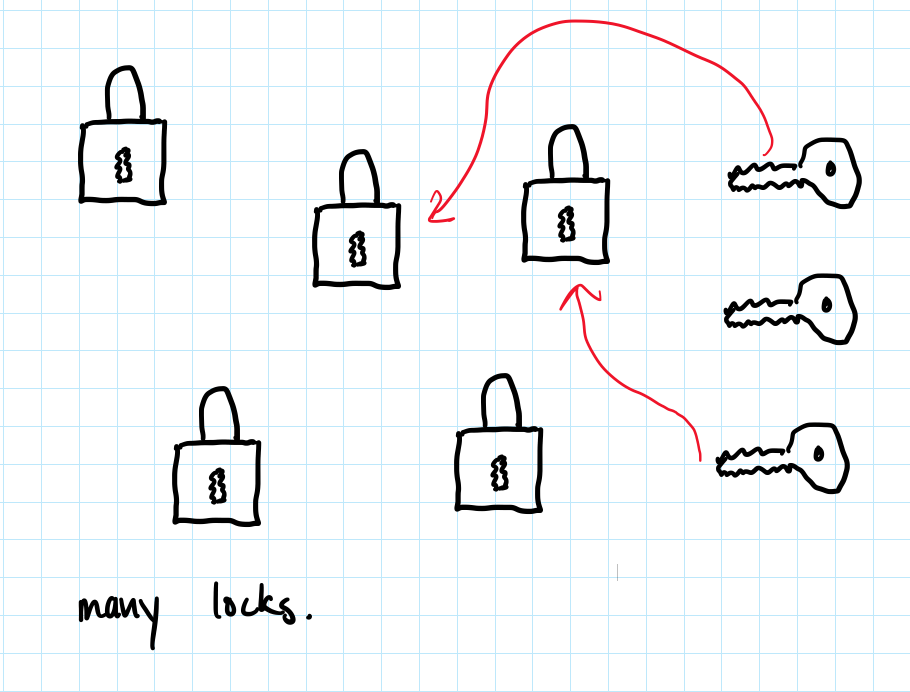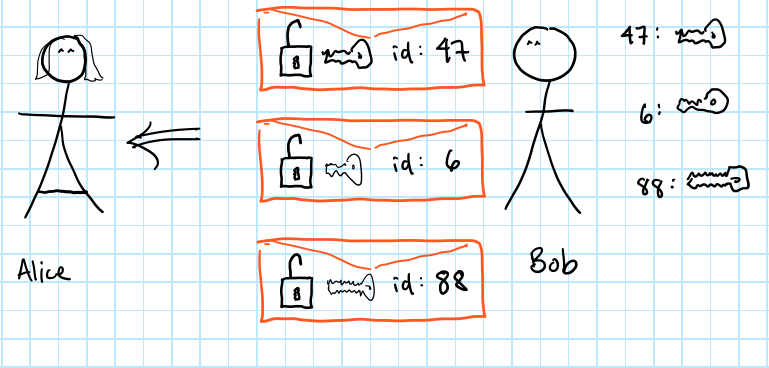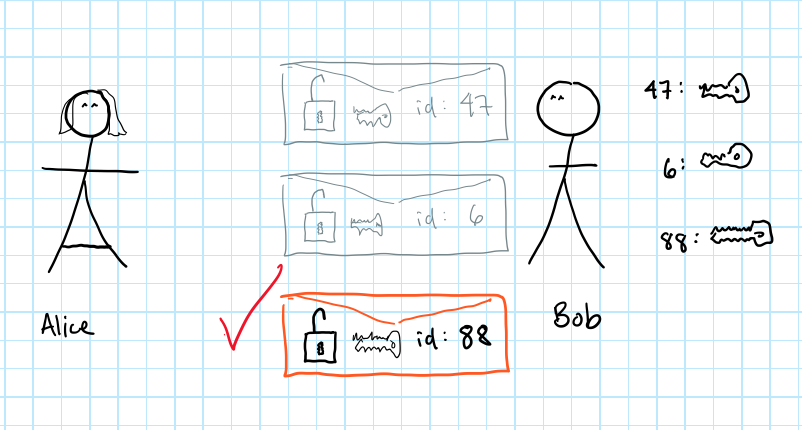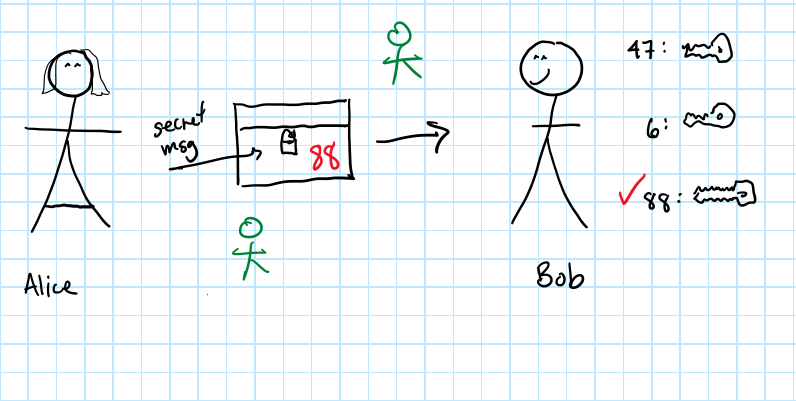- Alice and Bob want to send messages.
- Alice and Bob want to send messages in public.
- Alice and Bob want to send messages in public but no one should understand their messages.
- People can eavesdrop but they shouldn't be able to understand the messages.
 |
 |
|---|---|
 |
 |
- How keys work is a whole todo, so let's imagine A and B use a padlock.
- How do they exchange keys?
- Can Alice just send the key to Bob? (Why? Why not?)
- Can Alice just tell Bob the padlock ID? (Why? Why not?)
- How do two parties agree on a key when people can watch them talking about the key?
- Well, use a lot of them. Bob can send Alice say 3 envelopes of [padlock + key + random id].
- Alice picks only one envelope, opens it and takes out the [padlock + key + random id].
- She puts her secret message in a box, locks it with the padlock and writes the id on the outside.
- Bob reads the id outside the box and uses the corresponding key. Reads the secret message.
- What can an eavesdropper do?
- An eavesdropper can open all 10 envelopes to find the random id.
- That is 3x the work compared the Alice...
- Bob prepares m envelopes with [padlock + key + random id] and opens the one Alice picks
- m seconds to make the envelopes
- n seconds to open just one
- takes m + n seconds
- Alice picks one envelope and opens it
- Looks at all m envelopes and picks one
- Maybe n seconds to open
- takes m + n seconds
- Eavesdropper has to open all m envelopes, taking n seconds each.
- takes m * n seconds
- If m and n are close, Bob and Alice do (m+n) ~ 2n work
- Eve does n*m ~ n^2 work
- Bob is sending puzzles whose solutions
- reveal randomly-assigned id
- reveal a secret key
- Alice picks a puzzle and solves. Then she
- sends her secret message encrypted with the random id
- sends the random id just out in the open (not encrypted)
- Bob reads the random id then
- looks up and solves the puzzle
- Eve has to solve (up to) all the puzzles
- When she solves a puzzle that matches Alice's random id, she can stop
- Alice/Bob have to do ~2n work.
- Eve has to do around n^2 work
- (Has anyone told you that n^2 is a lot?)
- Try some numbers...if Alice Bob are doing 20 seconds, Eve is doing 100 seconds.
- That means your message won't be secret after 100 seconds.
- Alice, Bob do 5 minutes of work, Eve does 15 days of work.
- I mean, 5 minutes is a lot of work.
- 15 days isn't exactly eternity.
- Sadly, there's no way for Eve to be forced to do 2^n or n^100 or even n^3 work
- Happily, there's another way. Go look up Diffie-Hellman key exchange.
- Similar in that Bob sends value to Alice
- Then Alice chooses a random number, does some work on value and sends result to Bob
- Different in that Bob only sends a small amount of information
- Different in that the difficulty for eavesdropper relies on an non-proven assumption
- Eavesdropper can't "efficiently" figure out the key, as far as they know
- Similar in that Bob sends value to Alice
- PDF/markdown available on github: github.com/princessruthie/merkle-puzzle
- I don't know the answer to almost any questions.
- But I'm more than happy to squint my eyes and say "hm. I don't know."

